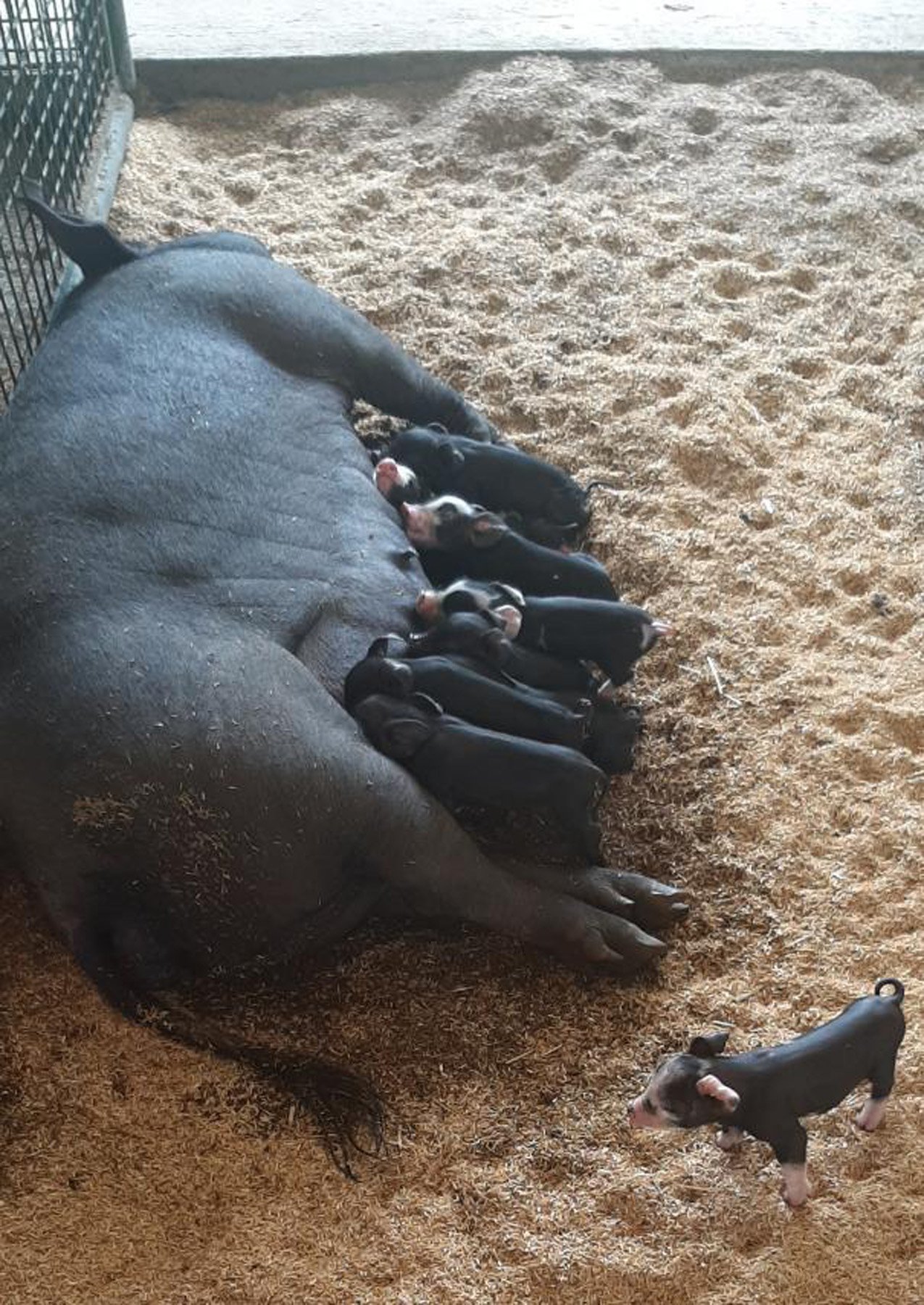INTERNATIONAL FLAIR TO ROYAL THREE COUNTIES
UKTAG, working with the Royal Three Counties Show, used this year’s event to invite international delegates and London-based Ambassadors in order to demonstrate the breadth and excellence of UK Agri Tech and livestock genetics.
With a lot of machinery covering agriculture and forestry on show and the largest number of livestock of all breeds present, the visitors agreed that the chance to visit gave them an excellent insight in to the UK’s capabilities.
On Thursday 12th June, UKTAG hosted a networking event for delegates from Mongolia, Azerbaijan and Argentina. Organised by UKTAG’s Chris Jackson and funded by DBT Central Asia and LATAM, it brought together international visitors from companies covering genetics, breed societies, chemicals, equipment and IT.
Hampshire Down Championship Presentation
On the Friday, the Royal Three Counties Society hosted the guests at the show. Visitors from Argentina, all members of the Argentinian Hampshire Sheep Breeders Association, continued to build on the already strong relationship that has been developed with the UK Association and supported by Federico Perez Wodtke working for the British Embassy in the Argentine along with UKTAG’s Director Rob Grinnall. This meeting also saw a launch of the campaign for the First World Hampshire Congress which will take place at Palermo Show in Buenos Aires in July 2026. The guests presented a sash for the Champion Hampshire bred this year by Stephen Short, whose ram lamb was champion out of the 120 entries at this National Show whilst reserve was Adrian Rundle’s ewe lamb.
After the classes, This was followed by a drinks reception hosted by the Hampshire Down Sheep Breeders Association. Charles Hurst, President of the Society, received the President’s Trophy given by the Argentinian Association for its inaugural presentation.
His Excellency the Ambassador for Mongolia and his wife were called forward for photographs with the Champion Beef Cow
Saturday saw the Royal Three Counties and UKTAG arrange for dignitaries to visit from London and they had the honour of welcoming HE the Ambassador of Mongolia to the UK, Mr Battumur Enkhsukh, the Counsellor in charge of economic and trade affairs, Mr Zorigtbat Tseveenjav, and the First Secretary of the Embassy of Tajikistan, Mr Zafar Safarov who all contributed to important discussions about trade and innovation. These guests were given tours and met with the Young Farmers and NFU before sitting with the Show Vice Presidents, CEO and Society Chairman and guests for lunch. Our visitors were hugely impressed and wish to expand and continue this collaboration with the UK.
Pictured with the Ridden Hunter Champion
On Saturday evening, the Argentinian visitors were given a forum space to promote their World Congress in 2026. Dr Rob Grinnall spoke first welcoming the 50+ audience thanking the visitors, the Association and President Mr Charles Hurst, going on to explain the work of UKTAG in facilitating exports of genetics, not just to Argentina, but worldwide. Rob explained the challenges, but also the rewards of selling genetics and building relationships with those sharing a passion for the same breed.
Hampshire Down International Forum
Finally, Federico Wodtke explained his role in the whole of South America and how he is supporting visits to and from the region through local embassies. His work and experience in these missions has played a huge part in developing these relationships.
This proved a hugely successful visit and a first step by The Royal Three Counties towards becoming a recognised international venue for agriculture. E: chris@uktag.co.uk





















